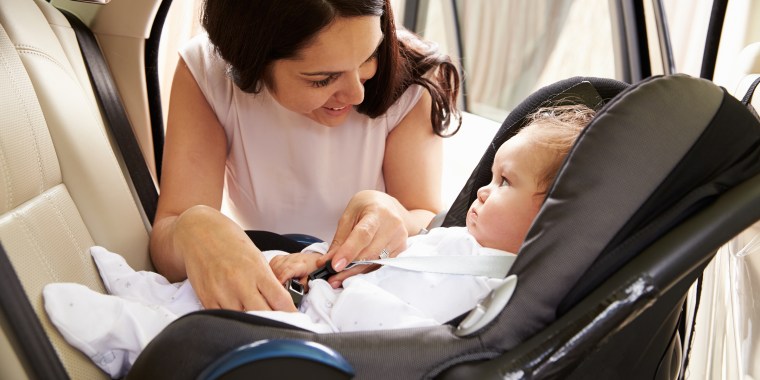Parents with young children should be alerted to new guidelines for car seats: the American Academy of Pediatrics is now saying that babies should remain rear-facing until they reach the maximum height and weight allowed by the car seat manufacturer.
The updated guidelines are a significant change from the previous recommendation that babies remain rear facing until at least age 2. Because the new guidelines are now based on the size of the child, some children will remain rear facing even after turning 2.
The AAP said all infants and toddlers should ride in rear-facing car seats for "as long as possible, until they reach the highest weight or height allowed" by the seat's manufacturer.
The updated guidelines reflect new research on car safety for children, said Dr. Ben Hoffman, chairperson for the AAP's council on injury, violence and poison protection.
"The last time this policy was reevaluated there had not been a lot of new data," Hoffman told NBC News. "But in the last year, there has been a significant change in what we know about the relative protection of car seats." The academy's policies are reviewed every three years.
Hoffman named a specific 2016 legal case in Texas in which a car seat manufacturer was found responsible for the life-altering injuries of a 20-month-old placed in a front-facing car seat when it did not properly warn customers of the risks.
"The validity of the data of the 2011 paper our recommendations were based on was called into question," he said. "The original research group went back and acknowledged there had been statistical inconsistencies."
Ultimately, Hoffman said, the guidelines' best practice has not changed: Delay transitions from rear-facing car seats because rear-facing is safer.
For parents using convertible car seats, the APP proposes the same practice: keep the car seat rear-facing for as long as possible until the maximum height or weight is reached. At that point, the car seat can be forward-facing with a harness.
Many manufacturers of popular convertible models specify weight ranges for both rear-facing and forward-facing. The Britax Marathon ClickTight, which was named the best convertible car seat by the New York Times’ Wirecutter site, tells consumers the seat should be rear-facing between 5 and 50 pounds, and forward-facing between 20 and 65 pounds. The Graco Extend2Fit, the Wirecutter’s runner-up, notes similar ranges.
"Parents get excited about milestones in their child’s life," Hoffman said. "They’re getting excited about turning their child around, from rear-facing to forward facing. But we want parents to balance that excitement and tamper that."
Older children whose size exceeds a forward-facing seat's limits — typically between the ages of 8 and 12 when the child reaches a height of 4 feet, 9 inches — should use a belt-positioning booster seat.
Felix Gussone, MD of NBC News contributed to this story.
